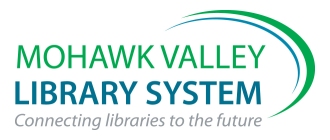 |
START WITH SCIENCE KITS
Science Programs for Children Ages 4 and 5 |
Objectives
- To introduce children to coins: pennies, nickels, dimes, quarters, half-dollars.
- To introduce children to paper money: $1, $5, $10, $20
- To introduce children to the concept of a given amount of money can be represented in different ways. (i.e. 2 dimes and nickel = 1 quarter)
- To introduce children to counting money.
- To introduce the word “equal”. It basically means “the same as”, but is a more accurate term. (Five pennies equal a nickel, but they definitely are not the same things. Even more noticeable with 4 quarters equaling one dollar, but we know they are not the same things to carry.)
|
Books : (In kit)
- The Coin Counting Book by Rozanne Lanczak Williams
- Pigs Will Be Pigs: Fun with math and money by Amy Axelrod
|
Equipment : (In kit)
- 1 calculator cash register with play credit card
- 1 “Alexander, Who Used to Be Rich Last Sunday” kit with instructions
- (includes pack of one, five, ten, and twenty dollar bills)
- (includes quarters, dimes, nickels, pennies, and half dollars)
- 5 square rubber stamps for coins
- 20 rubber stamps (2 of each)
- (includes heads and tails for penny, nickel, dime, quarter, half dollar)
- 4 Ink pads
- 1 black plastic money tray
- 1 set GIANT money (coins:20 Pennies, 20 Nickels, 20 Dimes, 8 Quarters, 2 Half Dollars, 2 Gold Dollars; Bills: 4 Ones, 2 Twos, 5 Fives, 5 Tens, 5 Twenties, 2 Fifties, 2 Hundreds)
|
Bookmarks : (In kit)
- Paper copies of the bookmark are included in the kit. PDF and JPEG copies are available here.
- PDF – 4 bookmarks per page. Ready to print in color.
- JPG – single high quality jpeg image.
|
Program
- Objectives
- To introduce children to coins: pennies, nickels, dimes, quarters, half-dollars.
- To introduce children to paper money: $1, $5, $10, $20
- To introduce children to the concept of a given amount of money can be represented in different ways. (i.e. 2 dimes and nickel = 1 quarter)
- To introduce children to counting money.
- To introduce the word “equal”. It basically means “the same as”, but is a more accurate term. (Five pennies equal a nickel, but they definitely are not the same things. Even more noticeable with 4 quarters equaling one dollar, but we know they are not the same things to carry.)
- Introduction
- Read ALEXANDER WHO USED TO BE RICH LAST SUNDAY by Judith Viorst
- Discuss a bit about money, allowances, spending, etc.
- Use the large money to introduce the coins.
- Show the coin and ask if they know the name (penny, nickel, dime, quarter, and half-dollar
- Show again and ask if they know the VALUE of each coin ( 1 cent, 5 cents, 10 cents, 25 cents, 50 cents)
- Try counting the coins into piles
- First the pennies: 1, 2, 3, 4, etc.
- Now the nickels: 5, 10, 15, 20, etc.
- Depending on the group, see how far you can go with the other coins.
- Repeat process for paper money.
- Introduce each bill
- Show again and ask if they know the value of each (which is a bit easier than with coins since the names of the bills are the same as the value.)
- Try counting the bills into piles.
- Go back to the pennies and nickel to work with idea that 5 pennies equal one nickel. Then 2 nickels equal one dime. Then try combination of nickels and dimes and pennies to make a quarter. Continue as group allows.
- Try the same with the bills and their equivalents.
- Program
- Hand out an assortment of money, both coins and paper, to each child.
- Ask them to look at it and each hold up a penny (or nickel, or dime or whatever.) See how they do with recognizing it.
- Choose a certain amount (best if under 15 cents) and ask if anyone has that amount exactly and what combination gives that amount.
- Repeat several times so everyone has some success responses.
- Depending on group, maybe pair them up to work together to “pool their resources”, both financially and academically for another round of identifying certain amounts of money.
- Repeat with paper money if time/interest allows.
- Introduce the cash register and show how it is used.
- Show the “Coin-U-Lator” and how it is used.
- Show various rubber stamps and how some are front side or back side of the coin.
- Allow free time to try handling the money, using the register, taking turns at being storekeeper, using the coin game, stamping their own coins, etc.
- General
- Remember the age of your group.
- For some it will be enough of a challenge to know the value of the coins, others will know the names.
- Counting of any kind may be difficult for this age, so counting of coins may add to the confusion.
- Subtracting and making change can be done with older children (first grade and up), but may well be beyond pre-schoolers who have not yet mastered subtraction in any concrete manner without getting into the abstraction of money. Therefore the tools for it are here, but not included in any instructions.
- Don’t be surprised if the main activity is arguing over the register and the coin game or stamping with stamps and ink pad.
- A major goal of this kit is to give basic understanding and appreciation for money as a tool. It is not intended to teach financial responsibility, savings, or uses of money.
|
Evaluation
Please print this evaluation, complete it and return to MVLS in the SWS red envelope.
Topics | About the Kits | Lending Policy

